Japanese gardens are more about shape, space and symbolic elements placed within the enclosed space. Flowers and colour, on the other hand, are used within the garden to give a sense of the seasons.
Japanese gardens can be divided into two basic types, Sacred and Secular.
 Isuien Garden Nara
Isuien Garden Nara# Sacred gardens tend to be more austere, with rock and gravel gardens being usually associated with temples, shrines or palaces dedicated to spiritual entities. They are created as places of meditation and contemplation.
# Secular gardens in most cases have been created for entertainment and enjoyment. They tend to be landscaped, wonderful to look at and walk through, with hills (either natural or man-made), ponds, streams and waterfalls.
Plants and decorative elements are carefully placed around the garden for the enjoyment of visitors
Whether they are small Stone and Sand gardens often found near temples or larger landscaped gardens, Japanese gardens all have a spiritual quality to them and leave the visitor with a sense of peace and tranquillity.
Unlike many western gardens there are no straight lines, formal flower-beds or geometric shapes.
In Japanese gardens features of great age are revered and voids are as important as solids.
Japanese Gardens - a brief history:
Early Japanese garden design was influenced by the Koreans and Chinese. During the Asuku Period (538- 645AD) Buddhism was brought to Japan from Korea. Gravelled courtyards were created as part of the Temple complex. The only surviving temple from this time is Horyu-ji Temple, 12km from Nara.
In the following years (645-710AD) Hakuko Period there was much more influence from China, during this time the temples still had gravelled courtyards.
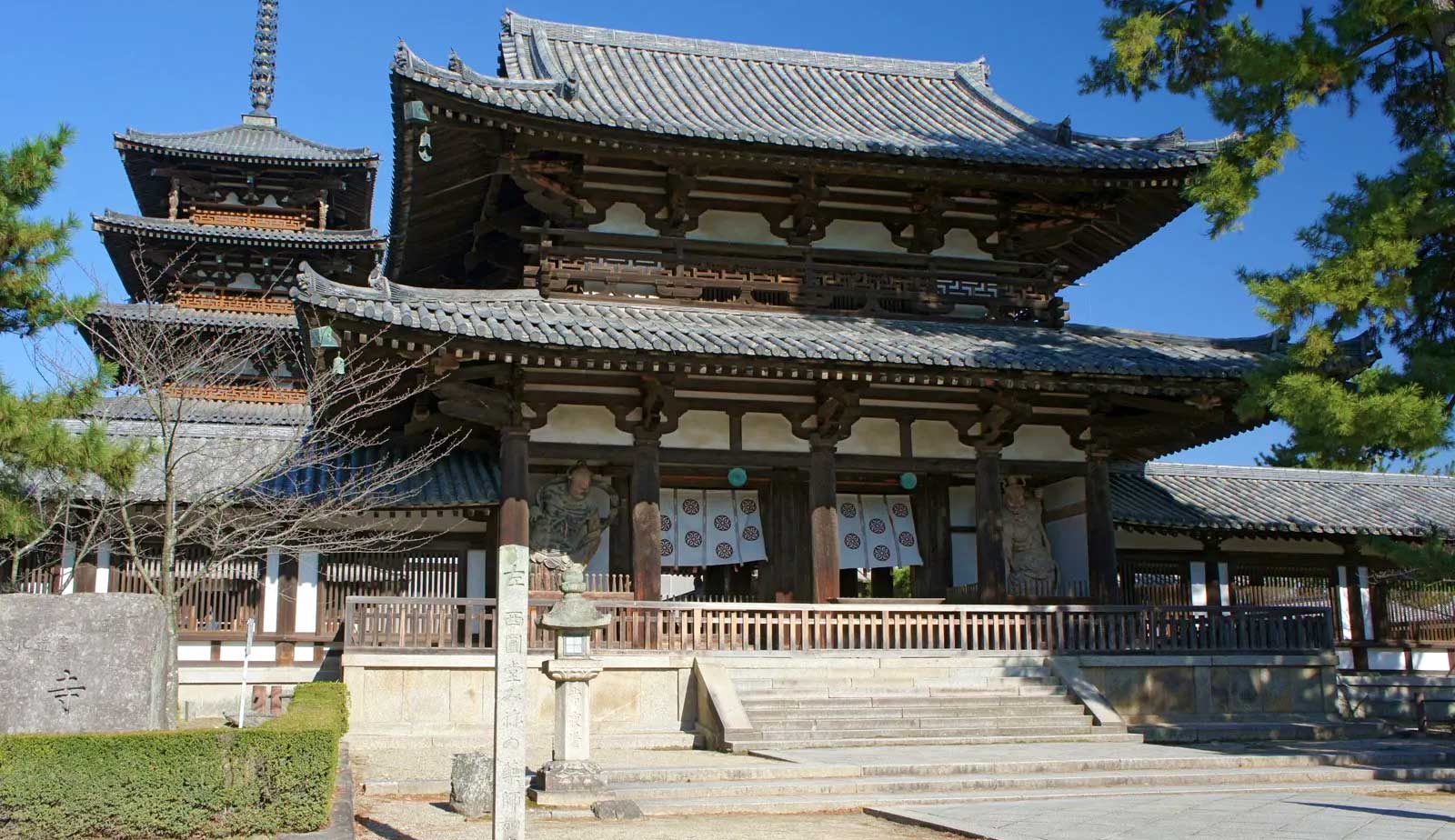 Horyu-ji-Temple - photo 663 Highland
Horyu-ji-Temple - photo 663 HighlandThe Nara period from 710-794 AD was a high point of Buddhism in Japan, it was time of growth in the arts and architecture.
Towards the end of this period and into the next Heinan period (794-1185) we can see further influence from China with the construction of Shinden Style Mansions and Gardens built for the aristocracy and imperial family.
The House would have a large open space at the front this would be used for various ceremonies and events. The garden would be built around a pond, in the south of the lake would be one or more islands, an arched bridge linking the island to the garden.
These landscaped pond gardens were known as Paradise Gardens and visitors would enjoy boating on the pond.
The paradise garden of the Enjo-ji Temple is one the only examples of a garden from the period.
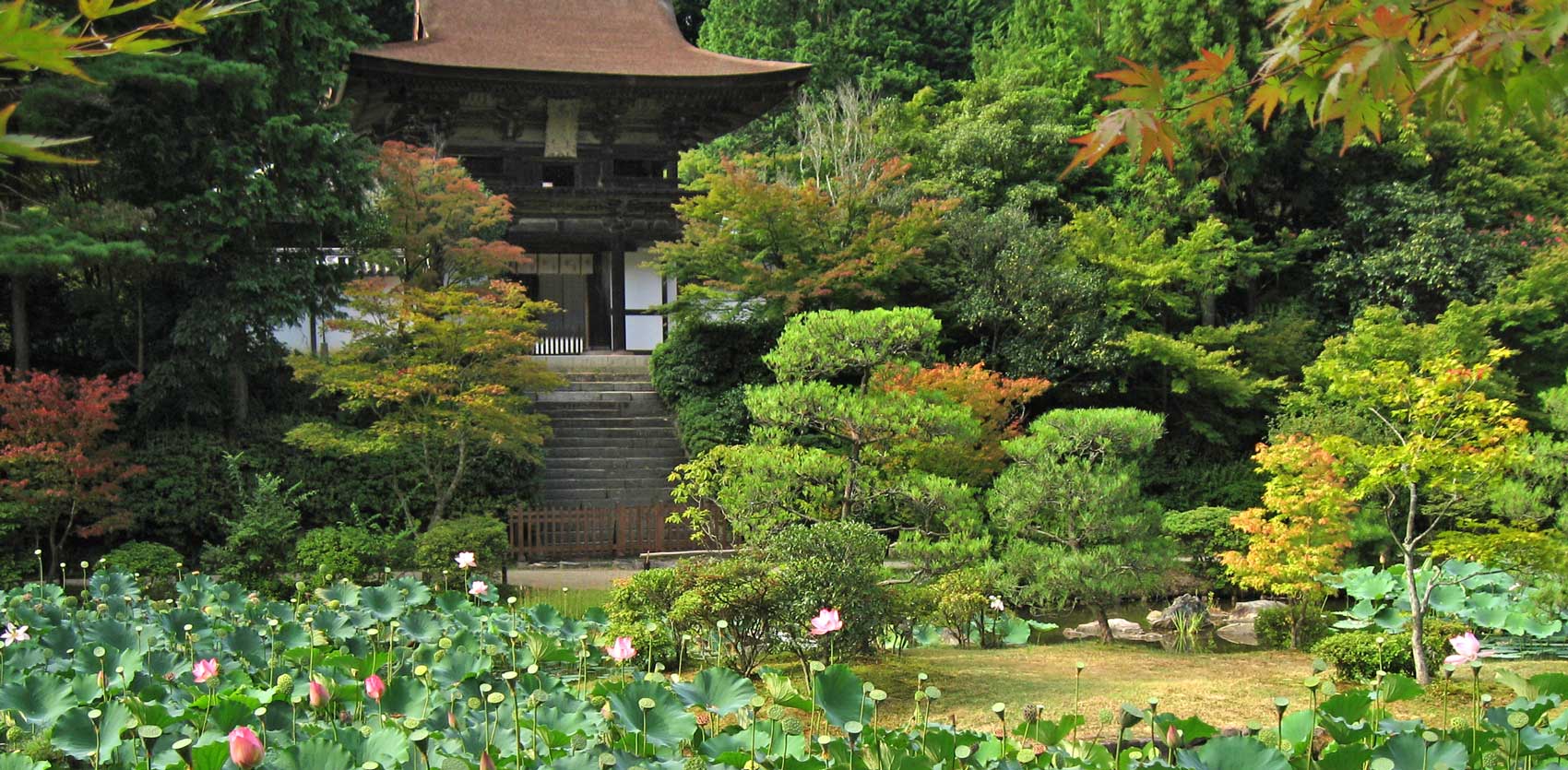 Enjo-ji Garden - Nara, photo Hamachidori
Enjo-ji Garden - Nara, photo HamachidoriDuring the Kamakura Period (1185-1133 AD) Japanese society had become feudal, the shogun was head and governed by the ways of the warrior. It was during this time that Zen Buddhism was introduced from China and quickly received a following amongst the Samurai and War Lords.
During this time the Paradise Gardens became Stroll Gardens evolving into more contemplative gardens to be viewed from the temple and resembling Chinese Gardens of the period.
The Muromach Period (1333-1573) was a time of great development of Japanese arts and garden design. During this time the Shogun moved back to Kyoto and many wonderful temples and gardens were built.
The stroll gardens were still an important part of the temple garden but at this time a new garden was added to the temple garden design, the Karesanui or dry landscaped garden. This style of garden was based on Zen ideology the aim to imitate nature and act as an aid to meditation.
The main elements of these gardens are rocks (representing land features) and gravel (water). Often the only plant life is the moss growing on the rocks. The gardens tend to be surrounded by a wall and only viewable from the porch of the chief monks house.
Examples of these temples include Ryoan-ji, Tenryu-ji, Kinkaku-ji (Golden Pavillion) and Ginkaku-ji (Silver Temple)
 Dry landscaped garden (Karesanui) - Ryoan-ji Zen Garden
Dry landscaped garden (Karesanui) - Ryoan-ji Zen Garden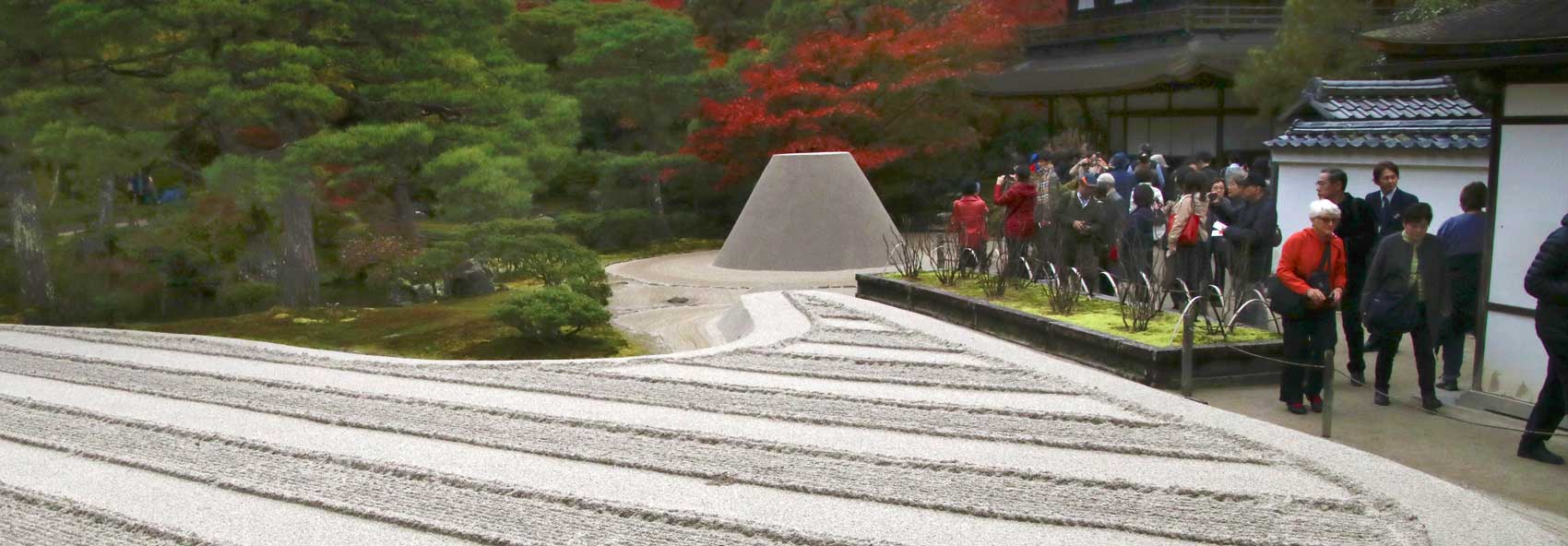 Ginkaku-ji - Dry Garden
Ginkaku-ji - Dry Garden Ginkaku-ji - Landscaped Garden
Ginkaku-ji - Landscaped GardenTea Houses: In the 14th century the tea ceremony was introduced into the garden and small simple huts were built, this was spiritual rather than social.
Stepping stones would lead guests towards the tea house, along the way would be placed decorative elements, lanterns and water basins. Within the garden of Urakuen in Inuyama is one of the oldest and finest surviving teahouses.
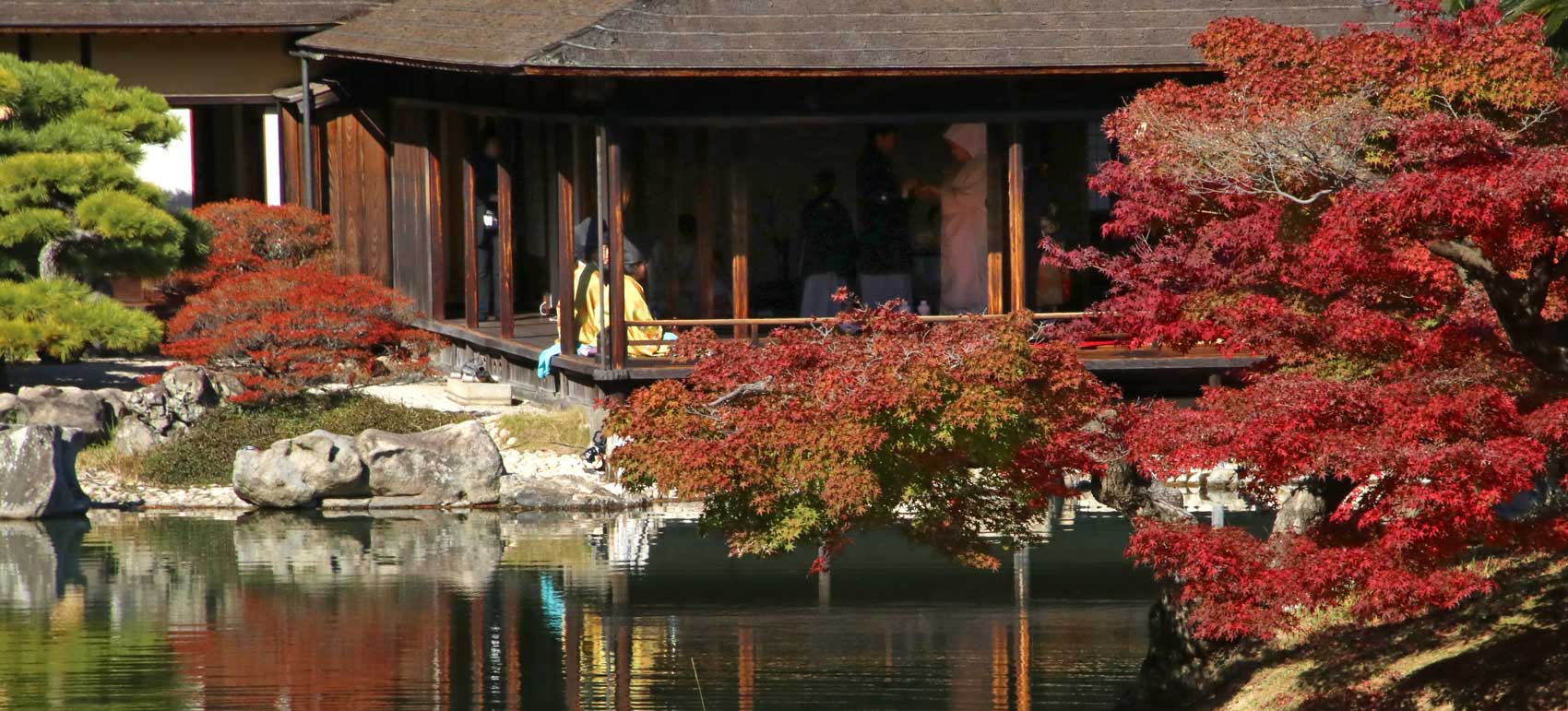 Ritsurin Gardens - Teahouse
Ritsurin Gardens - TeahouseThe Momoyama Period (1573-1600) represents a short period of 27 years when the reunited Japan was governed by a series of three military leaders. This was a time when showing strength was important – ponds tended to be more complex and large rocks were used to indicate power and authority.
Two examples of these gardens are Shosei-en Garden and Ni-jo Castle Garden both in Kyoto
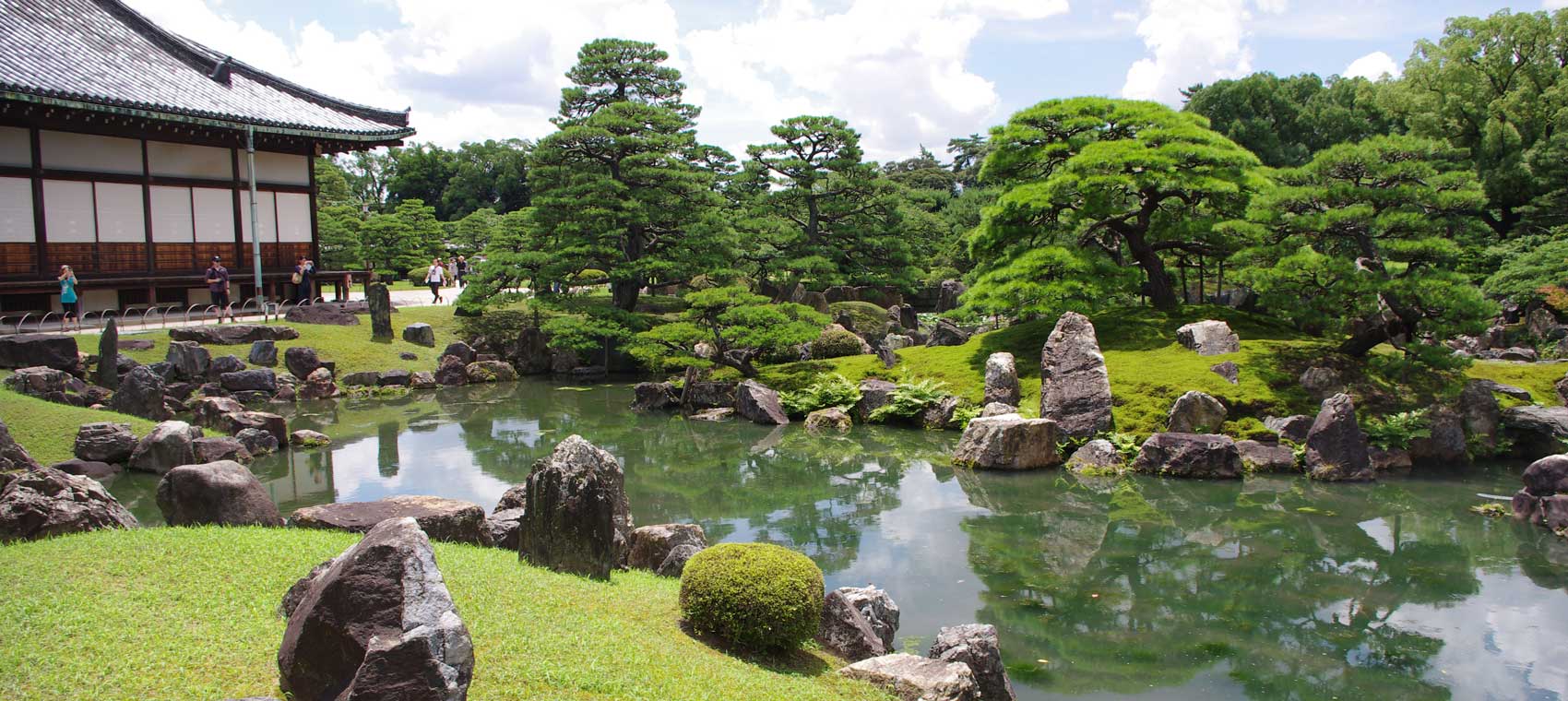 Nijo Castle Garden - photo Jakub Halun
Nijo Castle Garden - photo Jakub HalunThe Edo period (1603-1865) is a peaceful and stable time in Japan also noted by its isolation from the west. The garden designs reflects this time of peace and the gardens become larger incorporating lakes, islands, bridges and paths for visitors to stroll the gardens.
The large stroll gardens were designed to control the views and borrow vistas from the countryside or buildings nearby with the aim to create a constantly changing landscape full of interesting features.
Good examples of these include Ritsurin, Korakuen and Isuien Gardens.
It is interesting that principles and ideas are very similar to those developing in Europe at the same time, however some believe that each developed in isolation from the other.
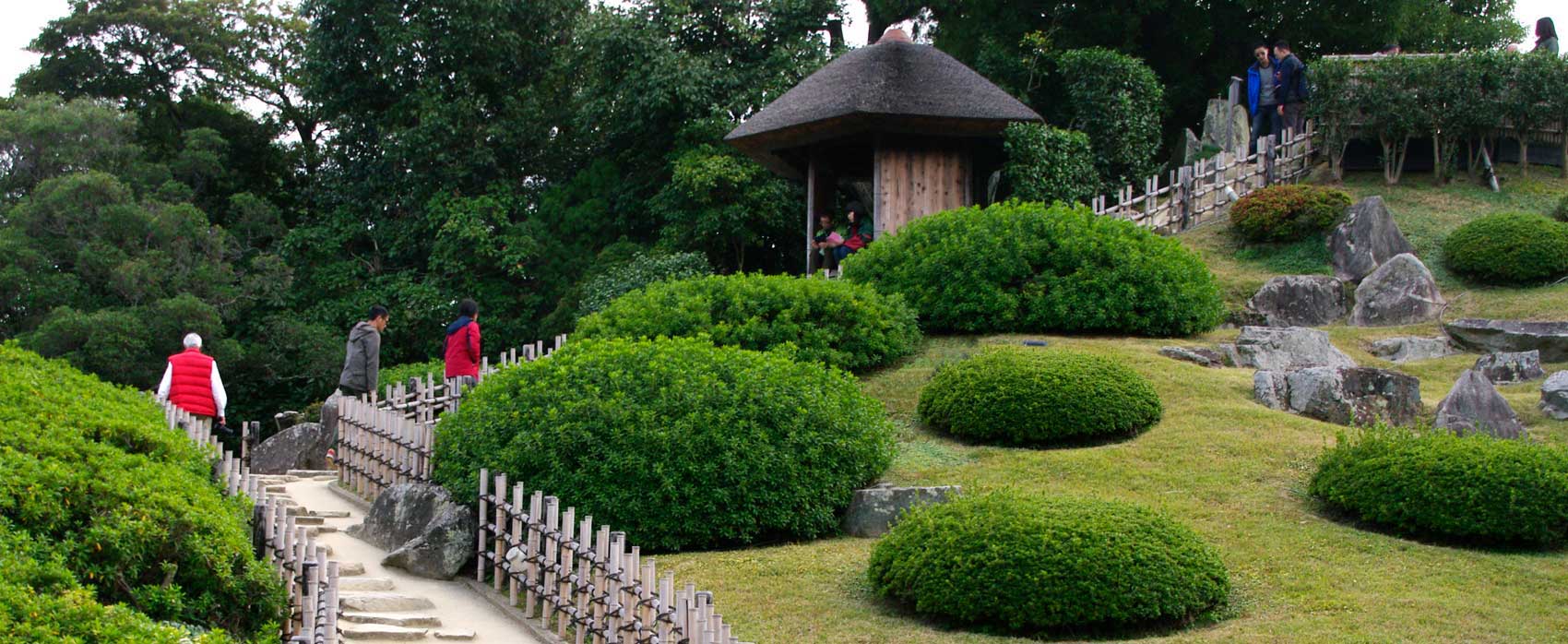 The many winding paths of Korakuen Gardens
The many winding paths of Korakuen Gardens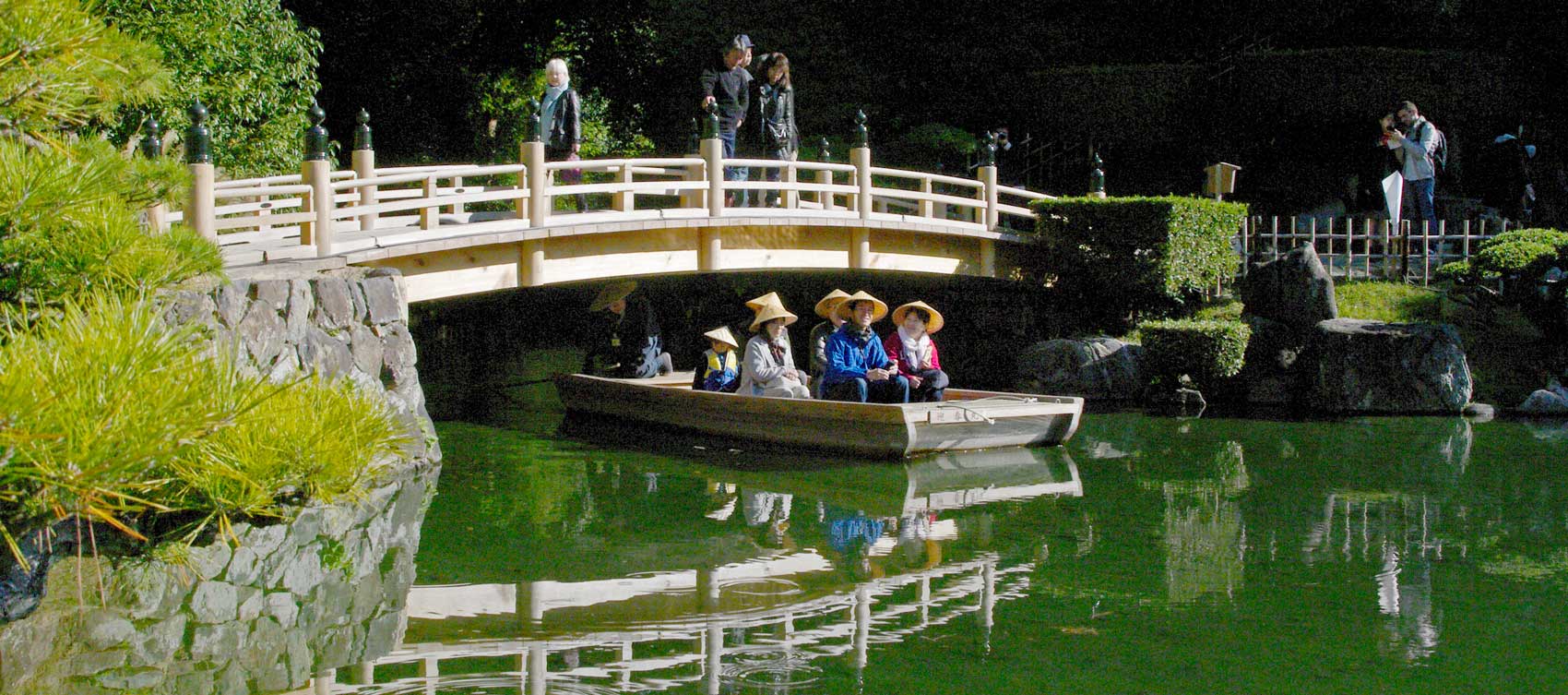 Ritsurin - walk or take a boat trip
Ritsurin - walk or take a boat trip Korakuen Gardens - landscaped with artificial hills, streams, lakes and borrowed views of Okayama castle.
Korakuen Gardens - landscaped with artificial hills, streams, lakes and borrowed views of Okayama castle.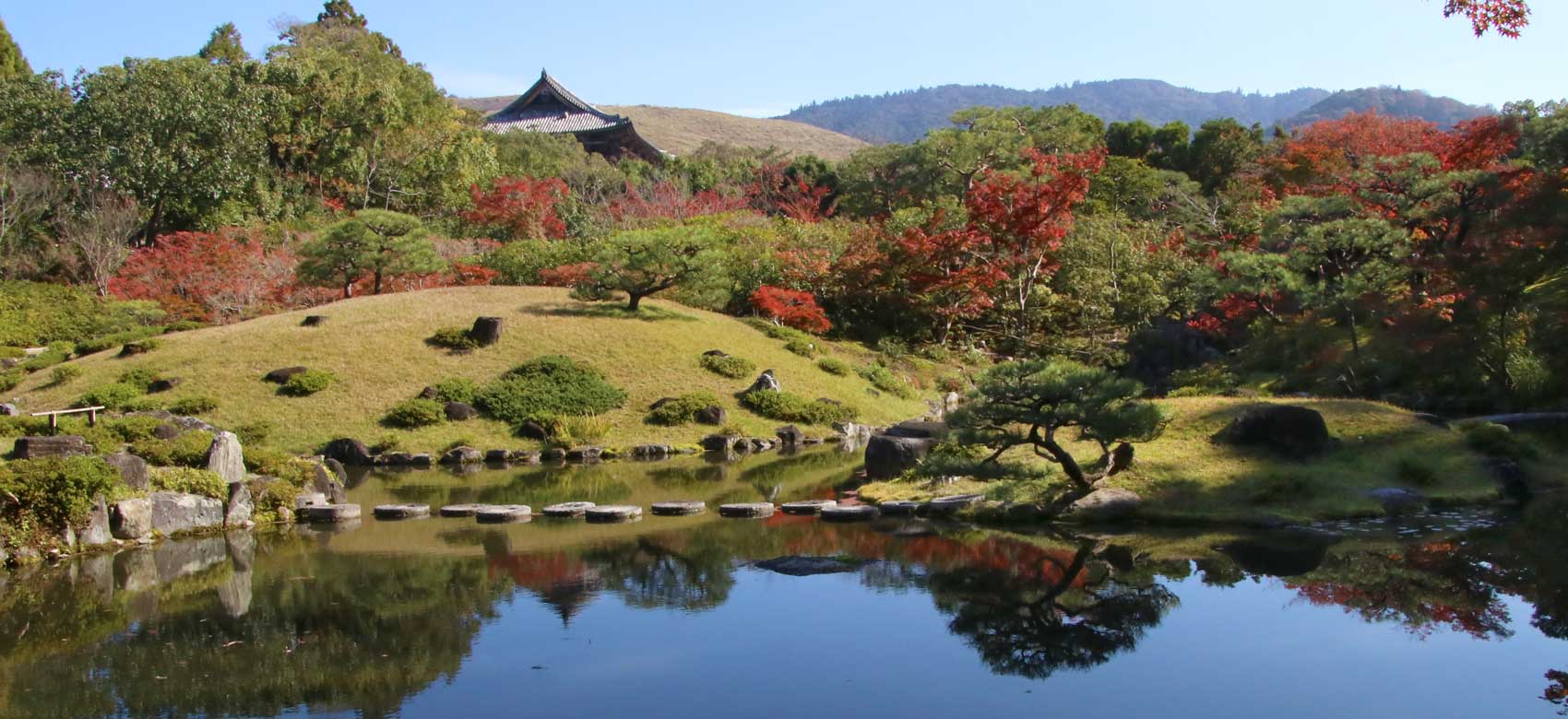 Broad landscaped gardens with borrowed view of the three cherished hills in the distance – Isuien Garden
Broad landscaped gardens with borrowed view of the three cherished hills in the distance – Isuien GardenAfter the years of isolation during the Edo period, the Meiji period (1868-1912) was a time when Japan embraced western influences.
It was also a time of modernisation and militarisation. The Samurai class and Shogunate were abolished, the Emperor reinstated and Japan became a constitutional monarchy.
We see in gardens of this time the creation of formal rose beds as the western influence manifested itself - though it did not make serious inroads.
 The Rose Garden at Kyu-Furukawa, Tokyo
The Rose Garden at Kyu-Furukawa, TokyoSummary:
Japanese gardens are a joy to visit. They are very different to European gardens, there are no formal lines or colourful flower borders. The paths are never straight but they take visitors on a glorious adventure with plenty of surprises, borrowed views, tranquil ponds, bubbling streams, waterfalls, trees heavy with pink blossom in spring or deep red leaves in autumn.
You will be challenged at first, then delighted and inspired, but you have to immerse yourself - it is the three dimensional experience, the sights, smells and atmosphere that will create the required response. Many even experience an inner serenity.
Enjoy your visit.